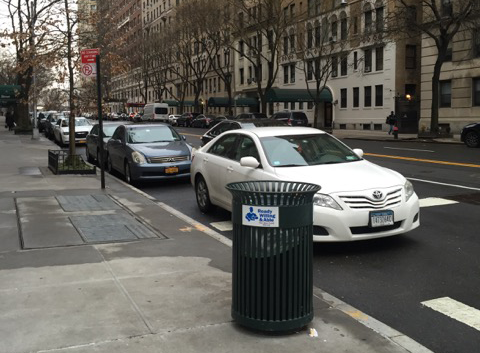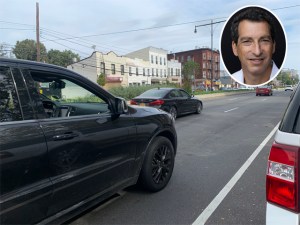It’s Way Too Tough to Make Basic Street Safety Fixes in New York — So Let’s Make It Easier
Norms have hardened around the idea that basic street safety changes should be subject to an inscrutable public process full of veto points. We have to change those norms.

For a city that’s purportedly committed to ending traffic fatalities, New York makes it awfully difficult to implement even the most basic traffic safety measures.
Street improvements that should be a routine matter of public safety get blocked or delayed by people who know how to game the city’s community board system. A project as simple as redesigning an intersection to be safer to cross can get bogged down for years in this process, which is inscrutable to most residents.
For people who do engage and try to make their neighborhood streets safer, the system imparts a sense of helplessness and frustration. The amount of time and energy it takes to win approval for even small-scale safety improvements is out of all proportion to the ease with which someone can parachute in and veto the project.
Case in point is this story from Streetsblog reader Lisa Sladkus, who describes the campaign to daylight two intersections near an Upper West Side school and keep cars out:
Parents from Metropolitan Montessori School at 85th Street between West End Avenue and Riverside Drive attended CB 7’s Transportation committee meeting on February 13th to ask the committee to add bollards to No Standing Zones at 85th and 86th Streets and WEA. These No Standing Zones were part of a safety campaign led by the school in 2012 and were one of four solutions that the school proposed to make the neighborhood safer. Since 2012, cars and trucks routinely park in these day-lit spots and use them as loading/unloading zones and car service pick-up points. Because of the parked cars and trucks, the daylighting ended up being useless to the neighborhood and potentially even more dangerous than before, given the size of the trucks and the pulling in and pulling out of car service vehicles.
At this meeting, there was a neighbor of the school who is against the safety changes. He claims that there has been a “catastrophic amount of lost parking” on the Upper West Side. The irony of his italicized use of the word catastrophic is almost unbearable. He correctly states that the daylighting and No Standing Zone signs are counterproductive because vehicles are constantly parked in them. His solution is to get rid of the No Standing Zones and restore the free car storage.
Although the committee voted in favor of the proposal to add bollards AND to daylight two additional spots, by the time the full board meeting came around on March 6, apparently, they had changed their minds. When I arrived at the meeting, the resolution was written completely differently than what was voted on back on February 13. And, to add insult to injury, we were informed that the entire item was pulled from the agenda because the anti-safety neighbor claimed that the community wasn’t well-informed. So, instead of protecting our kids, CB 7 once again chose to protect the anti-safety movement and delay these changes for yet another month.
It shouldn’t be this difficult to make progress on what should be a no-brainer safe-route-to-school project. And nothing in the law says the process has to be this convoluted. We’ve simply let norms harden around the idea of the community board veto.
Small-scale changes like daylighting an intersection or adding a bike corral don’t require community board notification. But the expectation is that NYC DOT should treat community boards as gatekeepers for even the most minor adjustment if it involves converting a single motor vehicle parking spot to some other function.
What if we changed the expectation? At this point, it’s clear that DOT will only supersede community board votes on rare occasions where City Hall feels like the public benefit of a project outweighs the political risk of moving forward without “permission.” But we can change the way DOT is granted permission.
There are many community board members around the city who want to do the right thing, and plenty of City Council members who value safe conditions for walking more than a few parking spots. They can set new norms. Instead of organizing the whole public process around the veto power of a few individuals, they can embrace their power to enable changes that benefit the public at large.
A council member or a community board could, for instance, come forward and tell DOT to install 50 or 100 intersection improvements in their district each year without seeking permission for each bike corral or daylighting zone. It would run counter to the instinct for control that guides so many decisions about our streets. But that’s exactly the point — to upend the expectations that currently hold back safer street designs around the city.
